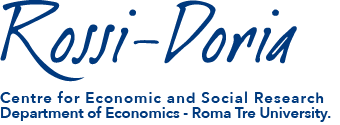 Challenges and Opportunities for Italy: Rossi-Doria Centre for Obiettivocomune (21/09/2016)
Challenges and Opportunities for Italy: Rossi-Doria Centre for Obiettivocomune (21/09/2016)
Associazione Obiettivocomune commissioned to CRES a study on “Italy and Foreign Markets: a Comparative Analyisis of Tariff Barriers”.
Alessandro Antimiani (EU Commission and CRES), Valeria Costantini (Roma Tre University and CRES) and Luca Salvatici (Roma Tre University and CRES) assessed the tariff barriers faced by the Italian exports in different markets for various sectors.
The assessment makes use of a global computable general equilibrium model and is based on the recently released database of the Global Trade Analysis Project (GTAP). Since the possibility to access international markets is crucial for the future prosperity of Italy and Europe, results will be relevant in the context of the ongoing trade negotiations of the EU as in the case of the TTIP agreement.
Foreign markets are an important outlet for Italian production system, that has furthermore strengthened over the last few years. At the same time, however, the current stalemate in World Trade Organization negotiations and the length of negotiation and implementation processes of regional and bilateral agreements have meant that the process of reducing trade protections, started with Uruguay round, has suffered a sharp slowdown.
This study aims to assessing the levels of protection that the various productive sectors of the Italian economy face in the various markets. The assessment of tariff barriers is made difficult by multiplicity of instruments and disaggregation of policies. In order to analyze these aspects, a general economic equilibrium model is used to calculate a protection index theoretically grounded, suc as the Mercantilistic Trade Restrictiveness Index proposed by Anderson and Neary.
The database used, Global Trade Analysis Project (GTAP), includes duties alone, and therefore does not allow non-tariff barriers to be taken into account. On the other hand, the use of a global model allows comparison between trade barriers to Italian exports and those that affect the exports of competitor countries within the European Union.
See also: CRES LINE OF RESEARCH: INTERNATIONAL TRADE AND TRADE POLICIES



